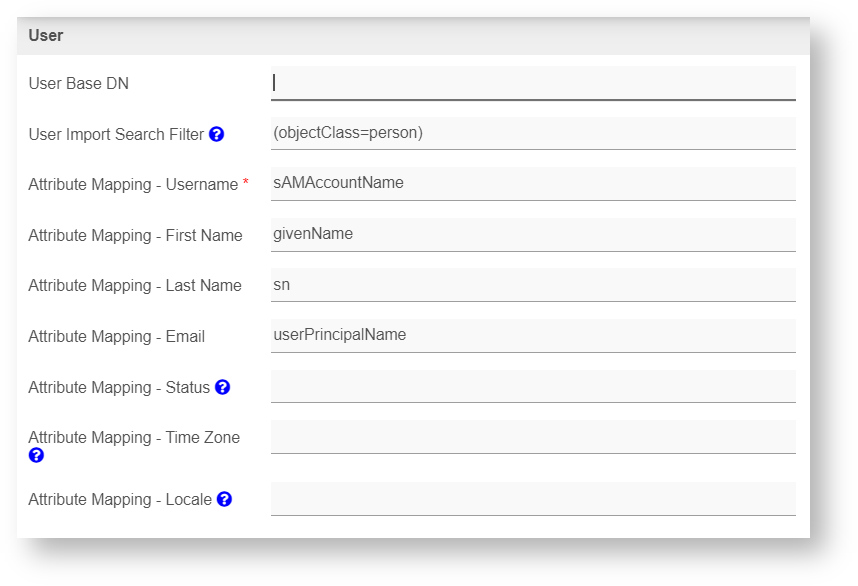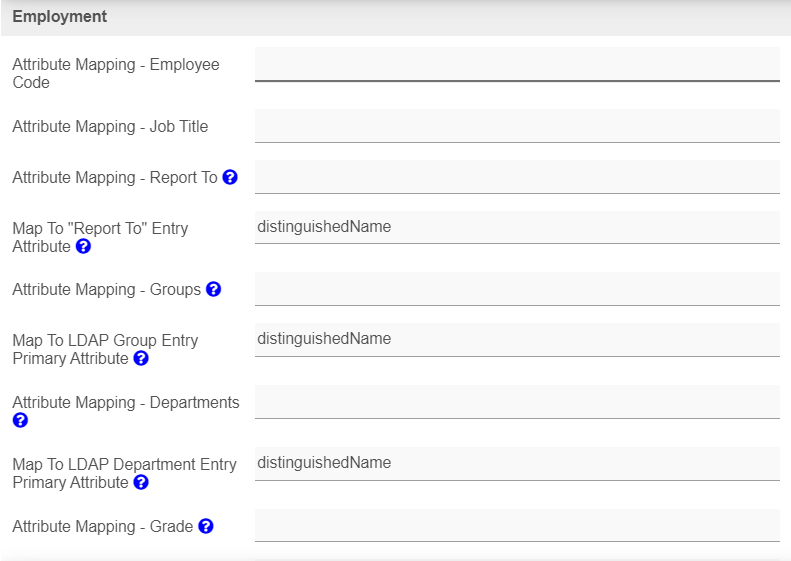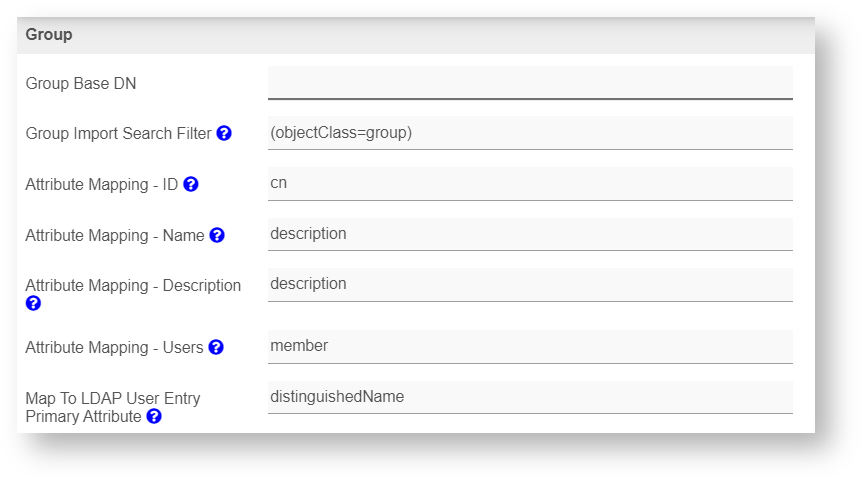| The LDAP Directory Manager allows you to integrate Joget with your existing AD/LDAP server. The enhanced LDAP Directory Manager implements all methods on the Joget Directory Manager class. In other words, it has been made possible to list and navigate through user, department and group entities in Joget itself. |
Do not lock yourself out when you are configuring any Directory Manager plugin. Keep your browser session open and perform actual test in other machine/browser so that in case of any wrong configurations used, you can still continue to make amends.
User license determines how many eventual users (sorted alphabetically by username in ascending order) from your LDAP/AD who can login to Joget. Make sure that you configure the plugin accordingly.
In case you have a misconfiguration and cannot login, you can make use of the credential set above ( Admin Username (Principal) & Admin Password (Credential) ) to login as the administrator.
The LDAP Directory Manager has a Debug Mode (option in the last tab) which is highly recommended to be turned on when configuring the LDAP plugin for the first time or when you are having issues. When debug mode is on, you can find all the search queries performed by the directory manager. They will all be logged into the joget.log files. From there, you can observe the search filter string and improve the accuracy and performance of the lookup. You can remove the debug checkbox once everything is running well.
LDAP Directory Manager Properties

| Name | Value |
|---|---|
| URL |
|
Admin Username (Principal) | LDAP username with read permission to LDAP/AD. |
Admin Password (Credential) | admin |
Root DN | DC=joget,DC=org |

| Name | Value | Screen (Click to view) | |||
|---|---|---|---|---|---|
User Base DN | User Base DN
| ||||
User Import Search Filter | (objectClass=person)
Please refer to other LDAP Search Filter syntax. | ||||
Attribute Mapping - Username | cn | ||||
Attribute Mapping - First Name | givenName | ||||
Attribute Mapping - Last Name | sn | ||||
Attribute Mapping - Email | |||||
Attribute Mapping - Status | |||||
Attribute Mapping - Time Zone | 8 | ||||
Attribute Mapping - Locale | en_US |

| Name | Value | |||||||
|---|---|---|---|---|---|---|---|---|
Attribute Mapping - Employee Code | ||||||||
Attribute Mapping - Job Title | ||||||||
Attribute Mapping - Report To | ||||||||
Map To "Report To" Entry Attribute | ||||||||
Attribute Mapping - Groups | ||||||||
Map To LDAP Group Entry Primary Attribute | dn
| |||||||
Attribute Mapping - Departments | ||||||||
Map To LDAP Department Entry Primary Attribute | dn | |||||||
Attribute Mapping - Grade | ||||||||
Map To LDAP Grade Entry Primary Attribute | dn | |||||||
| Attribute Mapping - Metas | Additional attributes to retrieve using #user.USERNAME.meta.KEY# or #currentUser.meta.KEY#
|

| Name | Value |
|---|---|
Group Base DN | |
Group Import Search Filter | (objectClass=groupOfNames) Please refer to other LDAP Search Filter syntax. |
Attribute Mapping - ID | cn |
Attribute Mapping - Name | description |
Attribute Mapping - Description | description |
Attribute Mapping - Users | member |
Map To LDAP User Entry Primary Attribute | dn |

Figure 5: Department Properties
| Name | Value | |
|---|---|---|
Department Base DN | ||
Department Import Search Filter | (objectClass=groupOfNames) Please refer to other LDAP Search Filter syntax. | |
Attribute Mapping - ID | cn | |
Attribute Mapping - Name | description | |
Attribute Mapping - Description | description | |
Attribute Mapping - HOD | owner | |
Attribute Mapping - Users | member
| |
Map To LDAP User Entry Primary Attribute | dn |

Figure 6: Grade Properties
| Name | Value |
|---|---|
Grade Base DN | |
Grade Import Search Filter | Please refer to other LDAP Search Filter syntax. |
Attribute Mapping - ID | |
Attribute Mapping - Name | |
Attribute Mapping - Description | |
Attribute Mapping - Users | |
Map To LDAP User Entry Primary Attribute |

Figure 7: Admin Role Properties
| Name | Value |
|---|---|
Admin Role Base DN | |
Admin Role Import Search Filter | (&(objectClass=person)(cn=admin)) Please refer to other LDAP Search Filter syntax. |
Attribute Mapping - Users | cn |
Map To LDAP User Entry Primary Attribute | dn |

Figure 8: Advance Properties
| Name | Value |
|---|---|
Result Size Per Paged Search | 100 |
| Debug Mode | Click checkbox to enable helpful debugging messages in your Joget logs. |
The following articles might be useful to you to understand how to filter users based on the groups in LDAP:
You can use the pipe symbol '|' to denotes 'OR' and include a second (or more) search parameters, for example:
(|(objectClass=person)(objectClass=user))
Sync LDAP User Directory Manager